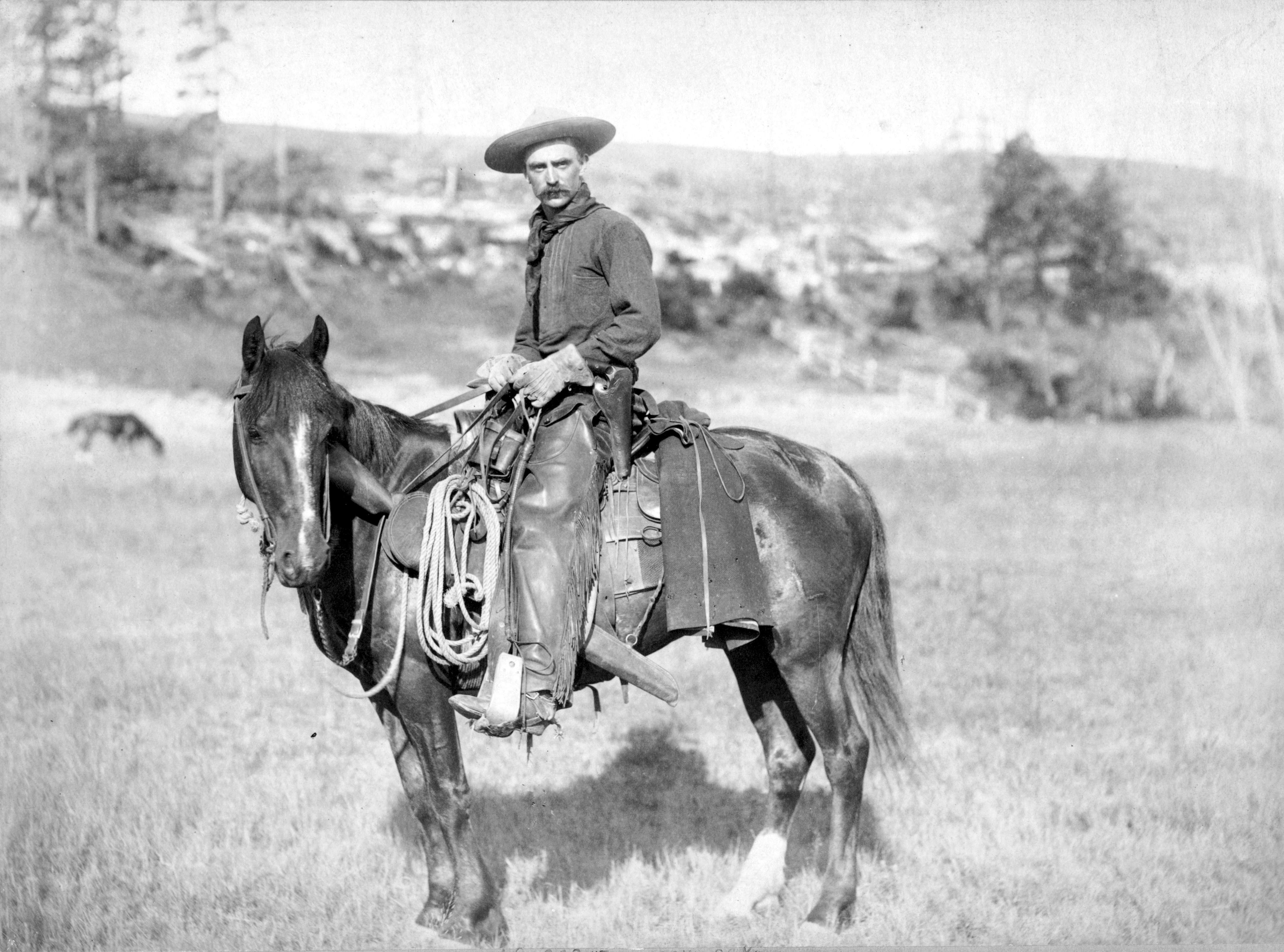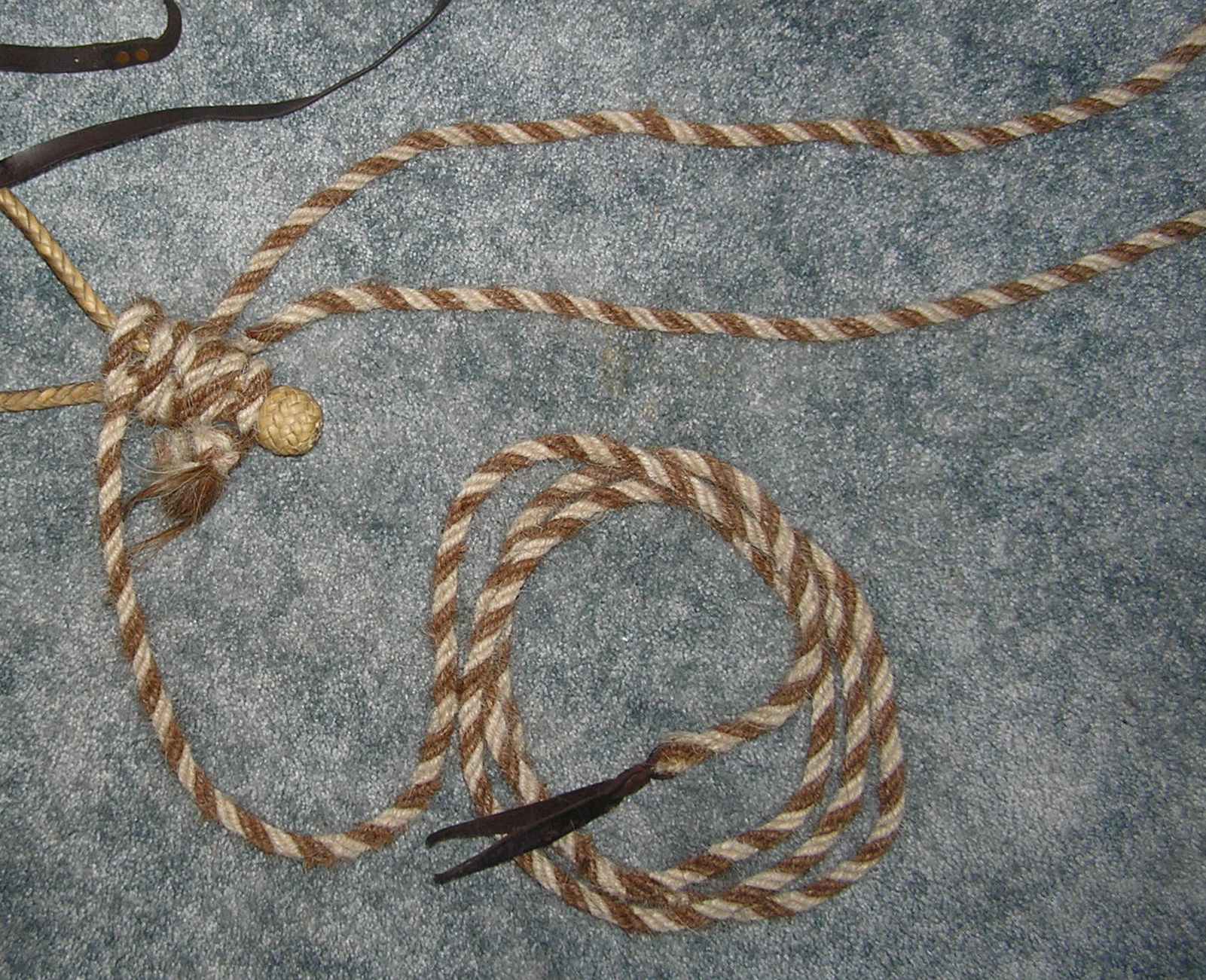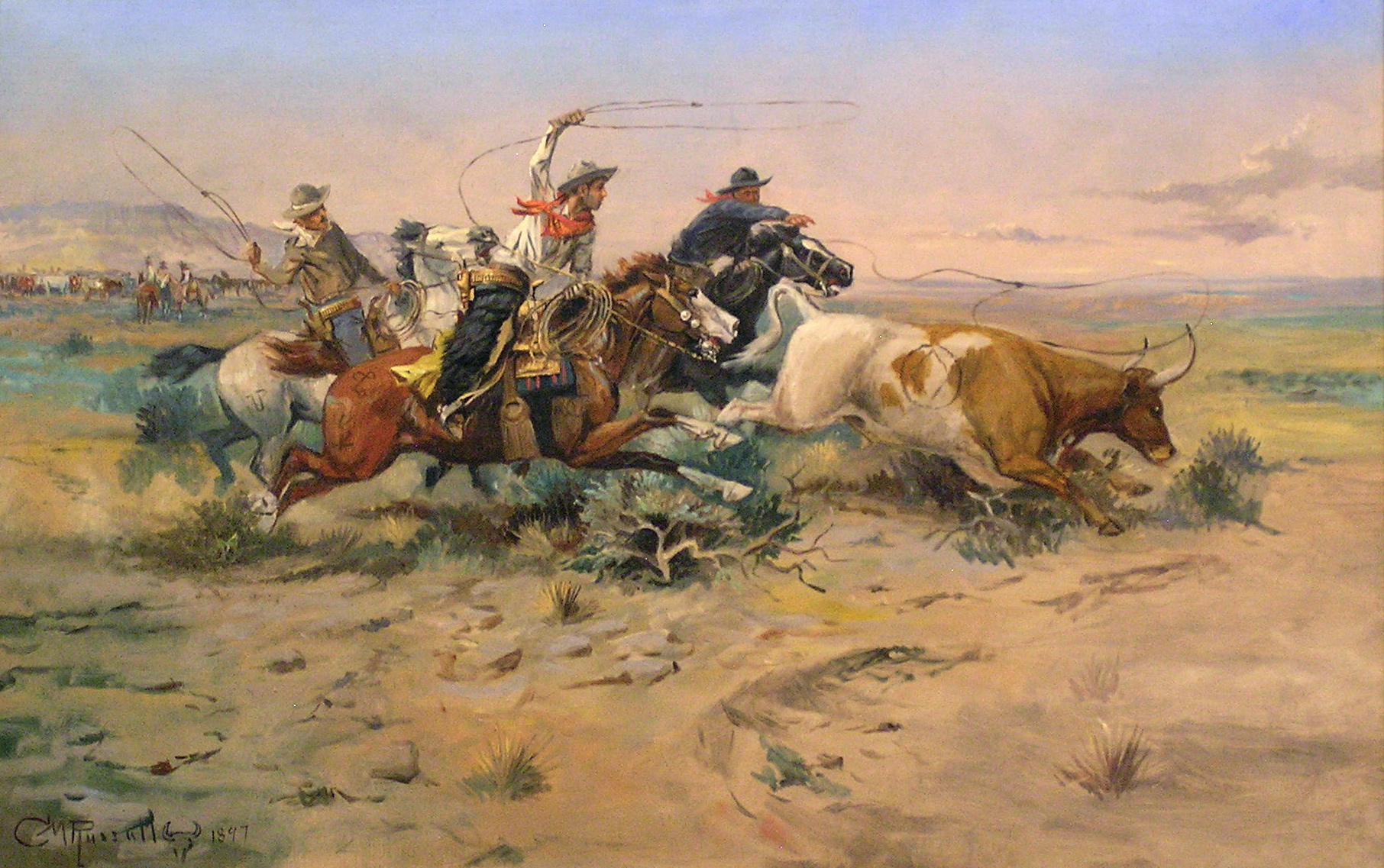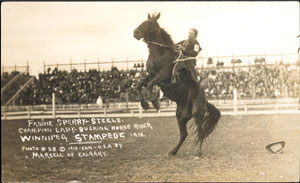|
Reins
Reins are used to direct a horse (or other animal) when riding or driving. They are attached to a bridle's bit or noseband and are made of leather, nylon, or other materials. Reins are used to give subtle commands or cues—also known as rein aids—to ask for a turn, a slower speed, a halt, or to go backwards. Types Other uses The word "rein" is sometimes used incorrectly to refer to a lead rope or a longe line, neither of which are reins. The idiom " rein in" means to hold back, slow down, control or limit; often misspelled as " reign in". The idiom " free rein" means to give or allow complete freedom, in action and decision, over something. See also *Horse tack * Neck rein *Riding aids Riding aids are the cues a rider gives to a horse to communicate what they want the animal to do. Riding aids are broken into the ''natural aids'' and the ''artificial aids''. Natural aids ''Natural aids'' are those of the rider's body, and ... [...More Info...] [...Related Items...] OR: [Wikipedia] [Google] [Baidu] |
|
 |
Western Riding
Western riding is considered a style of horse riding which has evolved from the ranching and welfare traditions which were brought to the Americas by the Spanish conquistadors, as well as both equipment and riding style which evolved to meet the working needs of the cowboy in the American West. At the time, American cowboys had to work long hours in the saddle and often over rough terrain, sometimes having to rope a cattle using a lariat, also known as a lasso. Because of the necessity to control the horse with one hand and use a lariat with the other, western horses were trained to neck rein, that is, to change direction with light pressure of a rein against the horse's neck. Horses were also trained to exercise a certain degree of independence in using their natural instincts to follow the movements of a cow, thus a riding style developed that emphasized a deep, secure seat, and training methods encouraged a horse to be responsive on very light rein contact. There are signific ... [...More Info...] [...Related Items...] OR: [Wikipedia] [Google] [Baidu] |
 |
Romal
A Romal (pronounced ro-MAHL) is a type of long quirt attached to the end of a set of closed reins that are connected to the bridle of a horse. It is not to be used to strike a horse, but rather was a tool used to assist in moving cattle. A romal is usually made of leather or rawhide, is about four to five feet long, flexible and somewhat heavy, to prevent excess swinging and to aid control. It is historically associated with the vaquero tradition of western riding, and today is most often seen in western pleasure and equitation classes at horse shows for certain horse breeds that are shown in the "California style" of western riding, or in other western events in regions of the United States and Canada that are most influenced by the vaquero style. See also *Vaquero *Western riding *Rein *Bridle A bridle is a piece of equipment used to direct a horse. As defined in the ''Oxford English Dictionary'', the "bridle" includes both the that holds a bit that goes in the mou ... [...More Info...] [...Related Items...] OR: [Wikipedia] [Google] [Baidu] |
|
Western Riding
Western riding is considered a style of horse riding which has evolved from the ranching and welfare traditions which were brought to the Americas by the Spanish conquistadors, as well as both equipment and riding style which evolved to meet the working needs of the cowboy in the American West. At the time, American cowboys had to work long hours in the saddle and often over rough terrain, sometimes having to rope a cattle using a lariat, also known as a lasso. Because of the necessity to control the horse with one hand and use a lariat with the other, western horses were trained to neck rein, that is, to change direction with light pressure of a rein against the horse's neck. Horses were also trained to exercise a certain degree of independence in using their natural instincts to follow the movements of a cow, thus a riding style developed that emphasized a deep, secure seat, and training methods encouraged a horse to be responsive on very light rein contact. There are signific ... [...More Info...] [...Related Items...] OR: [Wikipedia] [Google] [Baidu] |
|
|
Romal
A Romal (pronounced ro-MAHL) is a type of long quirt attached to the end of a set of closed reins that are connected to the bridle of a horse. It is not to be used to strike a horse, but rather was a tool used to assist in moving cattle. A romal is usually made of leather or rawhide, is about four to five feet long, flexible and somewhat heavy, to prevent excess swinging and to aid control. It is historically associated with the vaquero tradition of western riding, and today is most often seen in western pleasure and equitation classes at horse shows for certain horse breeds that are shown in the "California style" of western riding, or in other western events in regions of the United States and Canada that are most influenced by the vaquero style. See also *Vaquero *Western riding *Rein *Bridle A bridle is a piece of equipment used to direct a horse. As defined in the ''Oxford English Dictionary'', the "bridle" includes both the that holds a bit that goes in the mou ... [...More Info...] [...Related Items...] OR: [Wikipedia] [Google] [Baidu] |
|
 |
Horse Harness
A horse harness is a device that connects a horse to a horse-drawn vehicle or another type of load to pull. There are two main designs of horse harness: (1) the Breastplate (tack)#Harness, breast collar or breaststrap, and (2) the Horse collar, full collar or collar-and-hames. For pulling heavy loads, a full collar is required because it distributes pressure over a larger area of the horse. An ill-fitting full collar can cause chafing on the horse's skin and can interfere with its breathing, as can a breast collar that is positioned too high. Putting harness on a horse is called ''harnessing'' or ''harnessing up''. Attaching the harness to the vehicle or load is called ''putting to'' in the British Isles, or ''hitching'' in North America. The order of putting on harness components varies by discipline, but when a horse collar is used, it is usually put on first. Harness components designed for other animals (such as the yoke used with oxen) are not suitable for horses and will ... [...More Info...] [...Related Items...] OR: [Wikipedia] [Google] [Baidu] |
|
Draw Reins And Running Reins
Draw reins and running reins are pieces of riding equipment used for training that use the mechanical advantage of a 'single movable pulley' to cause the horse to bring its head down and inward. While a regular rein is the strap that attaches to the bit (horse), bit and is held by the rider, these types of reins slide through the bit ring, adding leverage to the rider's hands and arms, allowing the rider to force the horse's head into a desired position. Usage of the term in English riding and Western riding disciplines refers to slightly different designs that nonetheless work on essentially the same leverage principles. English Riding The terms "draw reins" and "running reins" are often used interchangeably in the English disciplines. The terms most often refer to reins which go from the rider's hand, through one bit ring (inside to outside), and attach to the girth. Usually this style is called a "running rein," though the term "draw rein" is also sometimes used. Some sty ... [...More Info...] [...Related Items...] OR: [Wikipedia] [Google] [Baidu] |
|
 |
Bridle
A bridle is a piece of equipment used to direct a horse. As defined in the ''Oxford English Dictionary'', the "bridle" includes both the that holds a bit that goes in the mouth of a horse, and the reins that are attached to the bit. It provides additional control and communication through rein pressure (Oxford English Dictionary, n.d., para. 1). Headgear without a bit that uses a noseband to control a horse is called a hackamore, or, in some areas, a bitless bridle. There are many different designs with many different name variations, but all use a noseband that is designed to exert pressure on sensitive areas of the animal's face to provide direction and control. The bridle was devised by Indo-European herders of the Pontic-Caspian steppes to control horses between 3000 BC and 2000 BC. Parts The bridle consists of the following elements: * Crownpiece: The crownpiece, headstall (US) or headpiece (UK) goes over the horse's head just behind the animal's ears, at the pol ... [...More Info...] [...Related Items...] OR: [Wikipedia] [Google] [Baidu] |
 |
Mecate Rein
The mecate ( or less anglicized ; ) is the rein system of the bosal style hackamore used to train young horses. It is a long rope, traditionally of horsehair, approximately 20–25 feet long and up to about 3/4 inch in diameter. It is tied to the bosal in a specialized manner that adjusts the fit of the bosal around the muzzle of the horse, and creates both a looped rein and a long free end that can be used for a number of purposes. When a rider is mounted, the free end is coiled and attached to the saddle. When the rider dismounts, the lead rein is not used to tie the horse to a solid object, but rather is used as a lead rope and a form of longeing, Longe line when needed.Price, 158 The traditional mecate was an integral part of the ''vaquero'' culture that became the Cowboy#Regional traditions, California tradition of western riding. The classic mecate is hand-braided of horsehair, usually long hair from the tail, often a blend of black and white hairs made into an alternati ... [...More Info...] [...Related Items...] OR: [Wikipedia] [Google] [Baidu] |
 |
Cowboy
A cowboy is an animal herder who tends cattle on ranches in North America, traditionally on horseback, and often performs a multitude of other ranch-related tasks. The historic American cowboy of the late 19th century arose from the ''vaquero'' traditions of northern Mexico and became a figure of special significance and legend.Malone, J., p. 1. A subtype, called a Wrangler (profession), wrangler, specifically tends the horses used to work cattle. In addition to ranch work, some cowboys work for or participate in rodeos. Cowgirls, first defined as such in the late 19th century, had a less-well documented historical role, but in the modern world work at identical tasks and have obtained considerable respect for their achievements. Cattle handlers in many other parts of the world, particularly South America and Australia, perform work similar to the cowboy. The cowboy has deep historic roots tracing back to Spain and the earliest European Settlement of the Americas, settlers of th ... [...More Info...] [...Related Items...] OR: [Wikipedia] [Google] [Baidu] |
 |
Bosal
A bosal (, , or ) is a type of noseband used on the classic hackamore of the ''vaquero'' tradition. It is usually made of braided rawhide (textile), rawhide and is fitted to the horse in a manner that allows it to rest quietly until the rider uses the reins to give a signal. It acts upon the horse's nose and jaw. Though seen in both the "Texas" and the "California" cowboy traditions, it is most closely associated with the "California" style of western riding.Price, Steven D. (ed.) ''The Whole Horse Catalog: Revised and Updated'' New York:Fireside 1998 p. 158-159 Sometimes the term ''bosal'' is used to describe the entire classic hackamore or ''jaquima.'' Technically, however, the term refers only to the noseband portion of the equipment. Bosals come in varying diameters and weights, allowing a more skilled horse to "graduate" into ever lighter equipment. Once a young horse is solidly trained with a bosal, a bit (horse), bit is added and the horse is gradually shifted from ... [...More Info...] [...Related Items...] OR: [Wikipedia] [Google] [Baidu] |
 |
Hackamore
A hackamore (or ) is a type of animal headgear which does not have a bit. Instead, it has a special type of noseband that works on pressure points on the face, nose, and chin. Hackamores are most often seen in western riding and other styles of riding derived from Spanish traditions, and are occasionally seen in some English riding disciplines such as show jumping and the stadium phase of eventing. Various hackamore designs are also popular for endurance riding. While usually used to start young horses, they are often seen on mature horses with dental issues that make bit use painful, and on horses with mouth or tongue injuries that would be aggravated by a bit. Some riders also like to use them in the winter to avoid putting a frozen metal bit into a horse's mouth. There are many styles, but the classic hackamore design features a ''bosal'' () noseband, and sometimes itself called a "bosal" or a "bosal hackamore". It has a long rope rein called a mecate and may al ... [...More Info...] [...Related Items...] OR: [Wikipedia] [Google] [Baidu] |
 |
Rodeo
Rodeo () is a competitive equestrian sport that arose out of the working practices of cattle herding in Spain and Mexico, expanding throughout the Americas and to other nations. It was originally based on the skills required of the working vaqueros and later, cowboys, in what today is the western United States, western Canada, and northern Mexico. Today, it is a sporting event that involves horses and other livestock, designed to test the skill and speed of the cowboys and Cowboy#Cowgirls, cowgirls. Professional rodeos generally comprise the following events: calf roping, tie-down roping, team roping, steer wrestling, bronc riding, saddle bronc riding, bronc riding, bareback bronc riding, bull riding, breakaway roping, and barrel racing. The events are divided into two basic categories: the timed events and rough stock events. Depending on sanctioning organization and region, other events such as goat tying and pole bending may also be a part of some rodeos. The "world's first pu ... [...More Info...] [...Related Items...] OR: [Wikipedia] [Google] [Baidu] |